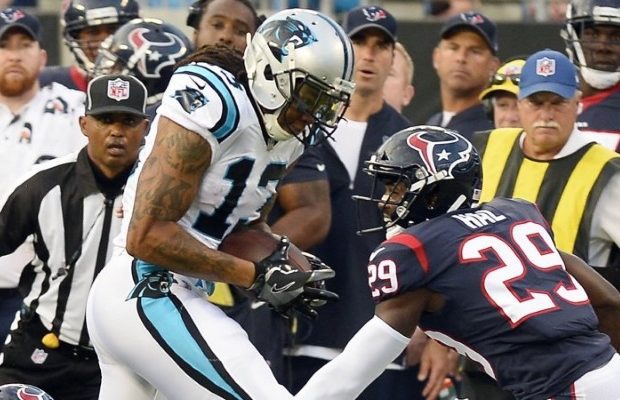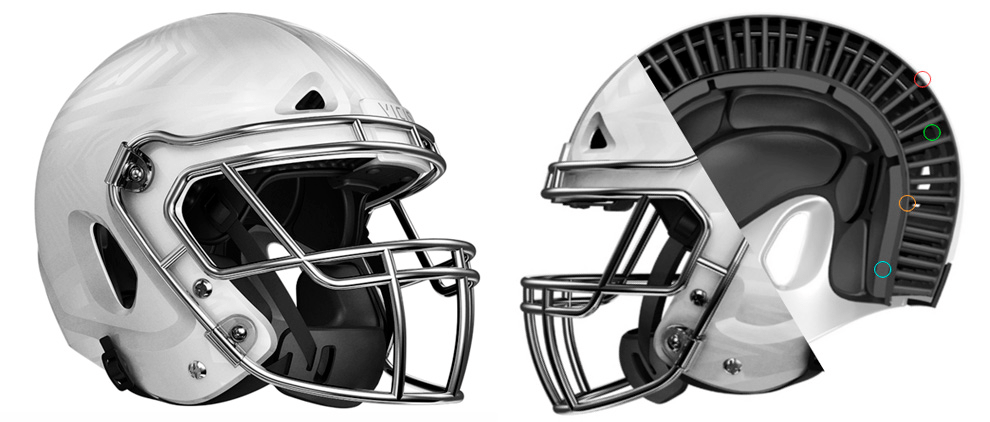Revolutionary new ZERO1 football helmet already in play, said to help dramatically reduce concussions

The NFL has taken a leap in safety as a majority of the league’s 32 teams have equipped their players with the number one concussion-preventive helmet on the market – the VICIS Zero1. Teams have already started using it in the preseason following spring testing.
With a technology aimed to protect the skull but also the brain the Zero1 has been ranked the number one helmet based on the NFL/NFLPA 2017 Helmet Laboratory Testing Performance Results.
According to VICIS, 25 of the NFL’s 32 teams bought the helmets before spring practice, and the company has now seen its dream become a reality as many NFL players have been wearing them during the preseason.
Last week, about a half dozen Houston Texans wore VICIS’s helmet during the team’s first preseason game against the Carolina Panthers. That group included All-Pro linebacker Brian Cushing, running back Lamar Miller, safety Andre Hal, and defensive end and former No. 1 overall draft pick Jadeveon Clowney.
The Zero1 features a breakthrough design involving a series of plastic columns that flex on impact, absorbing energy before it reaches the head. A hard shell below that protects the skull from direct blows. VICIS hopes the helmet can help reduce the number of on-field head injuries such as concussions.
Doug Baldwin, a wide receiver for the Seattle Seahawks who is working with VICIS, spoke with Carol Gline from Fox News, admitting that participation in football nationwide has diminished because of fear of concussions and their link to chronic traumatic encephalopathy (CTE) — but that the Zero1 helmet should change all that.
“We take significant hits on the football field. Football is a violent collision sport. A product like this can give you that confidence of safety. It can boost your performance. I think it’s going to save the game.”
Dave Marver, VICIS’ co-founder and CEO, said the Zero1 has four protective layers that “are designed to work together to provide outstanding fit and mitigate impact forces or slow them before they can reach the head and brain … better than any helmet ever made”:
- The outermost layer deforms like a car bumper, yielding when it’s hit and slowing impact forces.
- Right below that is a second, reflex layer of columns that “bend and eventually buckle upon impact.”
- The third layer is a very thin hard shell that protects against skull fractures.
- The fourth, innermost layer is the form liner, which conforms to the player’s head.
Marver said traditional helmets have a hard outer shell that makes a “crack” sound on impact. The Zero1, on the other hand, goes “thump.”
“The sound of the game is going to change. It means that players are going to be better protected.”
Marver went on to say that his team is excited to see the helmet get into real NFL action, but that he and his colleagues know that plenty of work lies ahead:
“We’re too busy serving NFL and NCAA players this season, while working hard to make our technology available to younger football players and boys and girls playing other sports as soon as possible.”
VICIS is the brainchild of Sam Browd, a University of Washington neurosurgeon. He co-founded the company along with Marver and Per Reinhall, a mechanical engineer at the university. Although according to Browd, no helmet will fully eliminate concussions from football, the Zero1 should go a long ways in reducing them.
Another benefit of the helmet’s design is better peripheral vision. Players can see more of the field and opponents coming at them.
Browd said a lot of players who have test-driven the helmet, linemen in particular, have said they “don’t feel the impact as much” when they are tackled.
Baldwin sums the situation up:
“There’s a lot of concerns out there amongst parents and adults about their children being safe on the football field. We [have] introduced a piece of equipment that is going to make the game safer, make their youth safer, prolong their careers in the NFL, in high school or college or wherever it may be. Then you have something sustainable … that’s going to bring back the attention to the fun of the sport, and not necessarily the risks of the sport. It’s going to help prevent injuries.”
With excerpts from Fox News, Inc.com.
